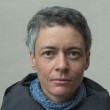Master's program
The Academic Master's study program "Art" (43211, 43213, 43214) is executed at the Art Academy of Latvia. Currently studies take place only in state-funded budget places in Latvian language. Admission is based on the results of the admission competition. The duration of studies is 2 years, studies are full-time and present format. Upon completion of studies, a Master of Humanities degree in visual arts is obtained. The place of study is the AAL central building at Kalpaka blv 13 and the study center at Kronvalda blv 4. As part of the studies, it is possible to use ERASMUS+ study and study practice opportunities in more than 100 art universities throughout Europe.
- The Master's study program was accredited on January 17, 2024, for a duration of 6 years, until January 18, 2030.
- Length of the program: 2 year full time studies
1) VISUAL ARTS SUBPROGRAMME SPECIALISATIONS:
2) VISUAL AND PLASTIC ARTS SUBPROGRAMME SPECIALISATIONS:
3) AUDIO–VISUAL MEDIA ARTS SUBPROGRAMME SPECIALISATIONS:
4) Design SUBPROGRAMME SPECIALISATIONS:
5) ART SCIENCE SUBPROGRAMME SPECIALISATIONS:
One of the goals of the program is to develop students' critical thinking, the ability to objectively analyse both - their own and others' creations, and to promote the creative process, which is included in the broader context of historical and contemporary paradigms.
Study work is divided into work in the academy, learning contemporary cultural developments, historical processes and creating a strong communication vocabulary that helps develop a future career at the international level, and individual work in workshops, research institutes, libraries and other places.
At the end of their studies, master's students develop theses on a topic of their choice. The practical par of the study results can be viewed annually in physical or digital format in an exhibition format.
In order to diversify the daily study environment, students are offered opportunities to participate in local or international events, that introduce them to the current art environment and provide with the opportunity to talk about their artistic practice to a wider audience.
Also, during their studies, students have the opportunity to participate in workshops organised by the academy, which are led by industry professionals, to attend various courses at ALL as well as in cooperation universities in Latvia and abroad. With the support of the academic staff, the study process at the AAL is implemented according to the student's individual creative and professional ideas.
Master's admission times:
From Tuesday to Thursday 10.00 - 16.00
Room 22 (1st floor). Phone: +371 26137572
E-mail: magistrantura(abols)lma.lv
In accordance with the Admission Regulations of the Art Academy of Latvia, the examination of applicants for studies at the master’s study program at the Art Academy of Latvia is carried out by evaluating the topic of the master's thesis presented in the Project of the master's thesis applications (clauses 6.2, 6.3, 6.4 of the AAL Admission Regulations).
At the Art Academy of Latvia, the master's thesis of the Academic Master's study program "Art" is a research-based creative work in the faculties of Visual Art, Visual Plastic Art, Design or Audio-Visual Media Art and in the Restoration department of the faculty of Art Science or a research work in the department of Art History and Theory.
The following must be presented in the projects of the master’s thesis: 1) description of the current topic's research; 2) research problem; 3) justification of the relevance of the topic; 4) the concept of the master's thesis or a description of the way how author looks at various phenomena; 5) the artist's intention for the work of art; 6) list of methods and techniques intended for the master's thesis.
When preparing a project of a research-based creative work or a project of a research work, the following prerequisites must be observed:
1. The application must be clearly formulated, justifying the choice of topic and its relevance.
2. The application must identify the research questions of the problem or the set of problems to be solved in the research and provide an insight into the current research of the topic or provide an insight into the current solutions related to the topic.
3. The application should formulate the research questions of the identified research problems, which are expected to be answered within the framework of the research.
4. The application must outline the conceived solutions, including the conceived research and research-based creative practice methods, design approaches or artistic concepts, which are planned to be used to obtain answers to the formulated research questions or offer solutions to the identified problems.
5. An insight into the previous research experience or creative practice of the author of the master's thesis project, especially if it is significant part of the submitted master's thesis project.
6. If the author of the master's thesis project has developed and submits a master's thesis project in interdisciplinary research, or if the applicant has not obtained a bachelor's degree in humanities in arts or a second-level higher education in arts, but an equivalent bachelor's or master's level education, then the master's thesis project must include an justified reasoning for the choice to obtain a master's degree in arts, identifying the interdisciplinary nature of the master’s thesis project, own research and creative experience, and the connection with the topic outlined in the master's thesis project.
7. If an art or design work is planned as the part of the master's thesis project, the visual material of the practical work (sketches, photographs, reproductions, drawings, etc.) must be added to the master's thesis project. In audio-visual media art, materials from other media can be added with prior notice.
8. The recommended length of the master's thesis project is between 1000 and 2000 words (in the departments of Visual Arts, Visual Plastic Arts, Design or Audio-Visual Media Arts and in the Restoration department of the Art Science faculty) and 2000 to 3000 words (in the Department of Art History and Theory).
9. Curriculum vitae (CV) of the author of the master's thesis project is also attached to the master's thesis project - a brief description of biographical information, acquired education, language skills, creative and work experience.



